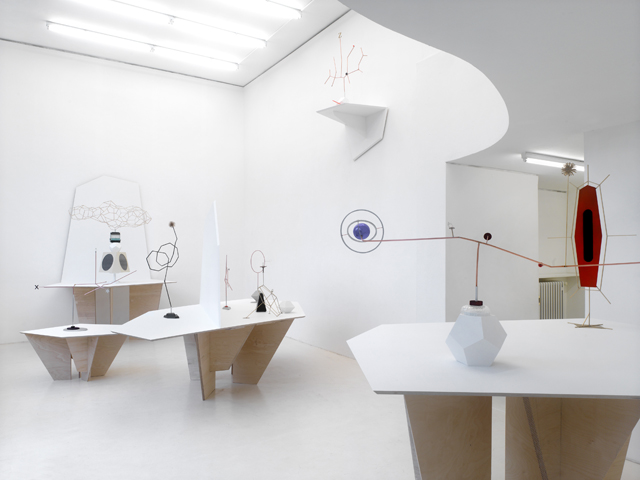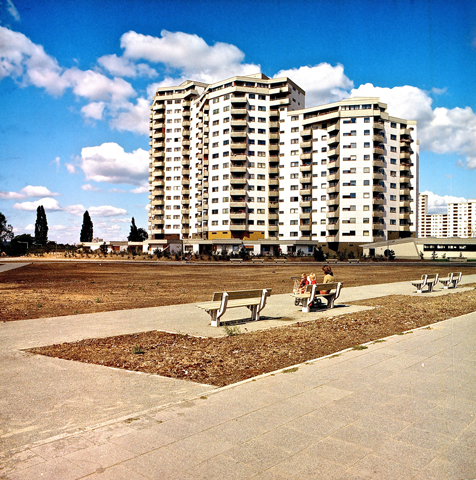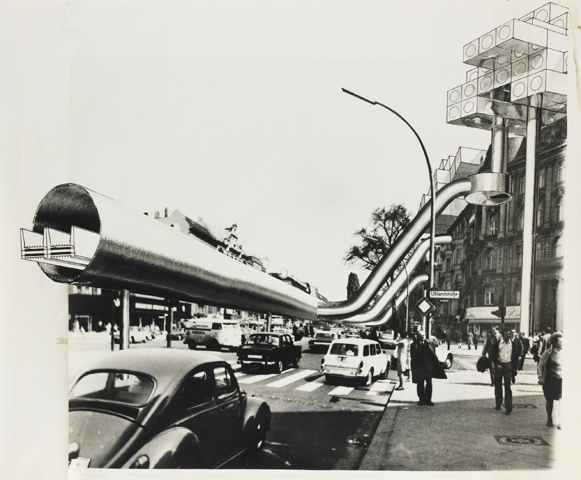Rebuilding Wurstropolis – Berlinische Galerie Returns with Architecture
- (first published on artlifemagazine.com)
- Jun 5, 2015
- 5 min read
Updated: Mar 24, 2020
(Berlin.) Some say Berlin is great, “but maybe a bit too self-centred”, and Berlinische Galerie’s reopening won’t change the idea. A faulty sprinkler system forced the public gallery to close for almost a year, and the landlord, a private investor, decided to go for a full modernization, spending some six million Euros. Let’s hope, the rent won’t rise too much to recompense the expenses, or that at least the gallery’s insurance company offers better terms in return. But this is literally not our business. We only care for the reopening shows, the biggest of which focuses on After-War Berlin with the professed goal to rehabilitate 1960s architecture.
While citizens and urban developers all over Europe complain about concrete blocks and yearn to see them demolished wherever possible, Berlinische Galerie honestly asks why the ‘60s three “f” - film, fashion, furniture - are revered by hipsters and see one revival after the other, whereas architecture’s bad reputation remains the same. Apart from doubts if really all sorts of film, fashion, etc. are still cool (German “Heimatfilms” definitely are not), our first attempt at an answer would be that people forced to live in this architecture, only have two options left: jump or create (those familiar with existentialist terminology, feel free to engage in a joke on the “jump”/leap; that’s sooo ‘60s, too). And there’s something else: Berlinische Galerie does not discriminate between “East” and “West”, exhibits come from both sides of the wall and prove there were but marginal differences in style. Often the labels won’t even tell a building’s affiliation.
Winning designs for the International Urban Development Competition ‘Capital Berlin’, 1957/58 vs. The German Pantheon for Socialistic Change of the Centre of the Capital of the GDR only shows that Eastern political language was still a tad more pompous than its Western counterpart. But back to the gallery’s question: the “hip” ‘60s are the Western ‘60s, even where, and often, influenced by socialist theory. If architecture is the only discipline where Socialist Realist practice prevailed all over Europe, then of course it’s no longer cool, and probably never was. Not a coincidence, after the war Bauhaus’ birthplace Weimar belonged to the GDR, the communist Eastern Germany (its influence cannot be underestimated).
The exhibition shows a lot of photos, models, designs, and gives detailed information on (un)realized projects. Arranged in six chapters, it commences with the immediate aftermath of the war under the headline “Risen from Ruins” - which few foreigners will recognize as the GDR’s national anthem -, and the decision how to proceed with architectural remnants of the past. The Reichstag in the East and the Memorial Church in the West are the most important examples here (if you should visit Berlin these days, don’t make the same mistake as we did: the scaffolding around the church tower on Breitscheidplatz is not part of the memorial). Later, new geometric forms were introduced, seating areas at Airport Tegel feature the same honeycomb design that is found on the facades of department stores. The dehumanising associations - a city as an insect colony - have been criticized early, but to no avail. Alternative designs were hardly ever accepted, in spite of bestselling essays like The Murdered City by J. Siedler or The Inhospitality of our Cities by then fashionable psychologist A. Mitscherlich that are explicitly cited here. The “spirit of ‘68” is also manifest in an exhibition poster for that year’s Diagnosis: On constructing in West Berlin with the clasped hands of “architects”, “speculators”, “city council” and “construction companies”. The automotive city went so far as wanting to ban pedestrians into tube-walks (see the design from Kohlmaier/von Sartory, 1969) leading from one concrete block to the other.
Some space is left for contemporary art to reflect the concrete cityscapes: paintings, photos, and an installation made from the facade of a shut down department store (Bernd Trasberger, Hertie, 2009). Historical TV documentaries from East and West bring back the vibe of those years. The denunciation of older buildings from so called Gründerzeit (the late 19th Century) might surprise; what today is perceived as authentic, solid, beautiful, was called sombre, dirty, and impractical then. There was only one way to deal with the past, and it was a radical one.
Other exhibits show alternative ideas that never came to be. One great idea to preserve, and add contemporary comfort at the same time, included “Backpack WCs”, bathroom units to be attached on the outside of historic buildings. Instead, serious, and expensive, renovations began many years later. This is actually the only convincing argument in favour of ’60s architecture - today’s viewpoint might just be a phase that other periods have gone through before, and some day it will be celebrated again. On the other hand: there’s North Korea doing it for us, and that should be enough.
This whole exhibition is aimed at Berliners in the first place. You won’t find any indication as to where a specific building is situated, nothing about its purpose. Neither does Berlinische Galerie try to explain why this particular style of architecture was chosen. Why did if not the majority, then political deciders want a standardization to the grey, the factual, the rigid? At least in the East it was born from ideas of equality, of unpretentious working wo/man’s life. But the renunciation of fascist monumentalism seems hardly less inhuman, it’s alltoo easy imagining “Telescreens” (-> Orwell, 1984) hanging on each inner wall. Starting from scratch can go horribly wrong if imagination lacks.
What else? The laureate of a painting award, Bernhard Martin with floating forms “inspired by the seven deadly sins, to which the artist adds an eighth, espionage and treachery” (citing the press release); and our favourite here: Björn Dahlem.
Our first thought on the exhibition was that the artist offered himself a distant learning course in applied witchcraft with Lady Kassandra from Teleshopping. But this impression soon gave way to a much more sympathetic one. On spirally arranged tables (when the artist accorded us a short interview, he countered our guess “DNA helix” with “galaxies”), Dahlem shows delicate sculptures with mystical symbols, pyramids, crystals, golden trees, eggs, stars and pine cones.There’s also a life-size(?) UFO, visitors may step us the ladder to not be probed, but watch a video. We remember a panel discussion with Wim Delvoye some years ago where the Belgian art star expressed his admiration for French UFO church founder and former race driver with that one crash too much Raël, he talked about plans to form his own cult. Does Björn Dahlem follow in his steps (and has he as much sense of humour as Delvoye)?
The German tells us, there is no irony, he’d “never mean the opposite of what he’s saying” (we would rephrase the question now, and just ask for plain mockery, but it’s unfair, this is serious, and seriously good). And then, he gave off some of his idea, saying science has taken the place of religion today, with claims that often are no less dogmatic and self-referential. He could have used symbols of the big religions instead of esotericisms, but he “just didn’t”.
The video features city ruins and Dahlem wearing a golden suit to mirror the colour of his biologic objects, a tree on exactly the opposite end of the show is perfectly in view from up here. It’s a parable on a travel to distant worlds and realities, “Art, the final frontier”. Sadly, Dahlem is not a poet, so better don’t listen to the heavy phrases accompanying the images; si tacuisses...
The world definitely needs more ideas, and people, of the unscientific kind, to offer vision and meaning. It’ll always be what we define it.
Berlinische Galerie, Reopening Shows, 29 May to 26 October 2015










Comments